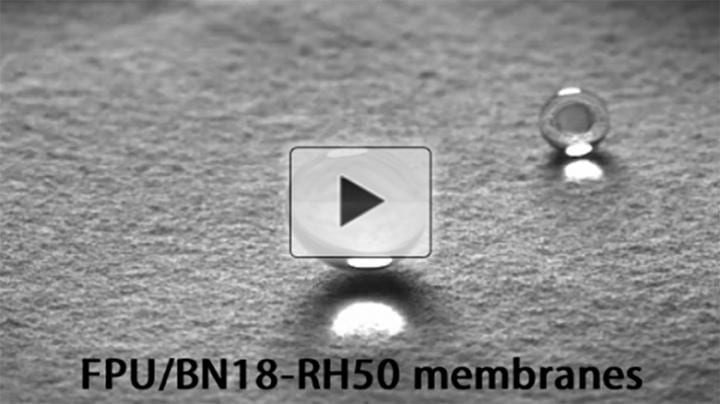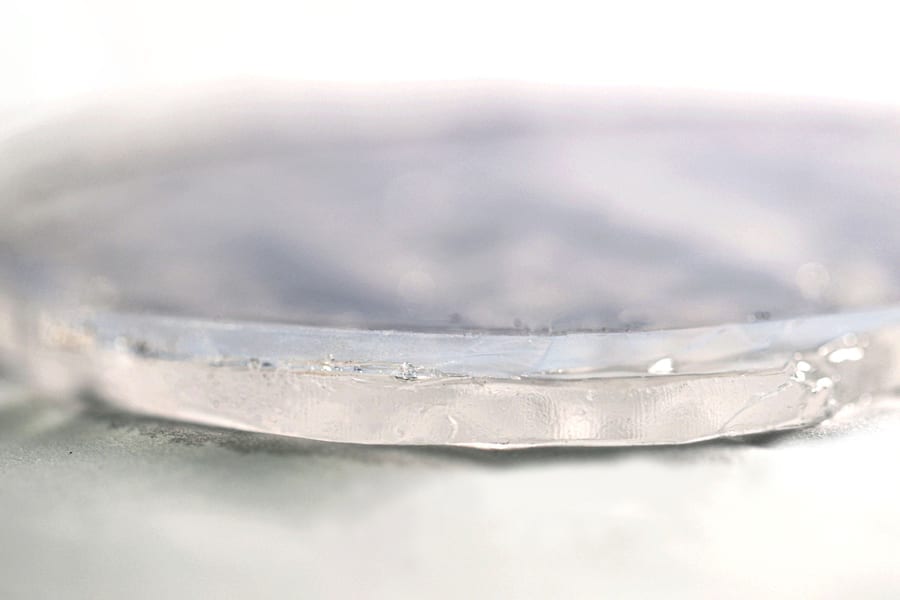
A NEWLY DEVELOPED FABRIC REPELS WATER AND ALLOWS MOISTURE TO EVAPORATE FROM THE SKIN.
Air conditioning and other space cooling methods account for about 10% of all electricity consumption in the U.S., according to the U.S. Energy Information Administration. Now, researchers reporting in ACS Applied Materials & Interfaces have developed a material that cools the wearer without using any electricity. The fabric transfers heat, allows moisture to evaporate from the skin and repels water. Watch a video about the new fabric here.
Cooling off a person’s body is much more efficient than cooling an entire room or building. Various clothing and textiles have been designed to do just that, but most have disadvantages, such as poor cooling capacity; large electricity consumption; complex, time-consuming manufacturing; and/or high cost. Yang Si, Bin Ding and colleagues wanted to develop a personal cooling fabric that could efficiently transfer heat away from the body, while also being breathable, water repellent and easy to make.
The researchers made the new material by electrospinning a polymer (polyurethane), a water-repelling version of the polymer (fluorinated polyurethane) and a thermally conductive filler (boron nitride nanosheets) into nanofibrous membranes. These membranes repelled water from the outside, but they had large enough pores to allow sweat to evaporate from the skin and air to circulate. The boron nitride nanosheets coated the polymer nanofibers, forming a network that conducted heat from an inside source to the outside air. In tests, the thermal conductivity was higher than that of many other conventional or high-tech fabrics. The membrane could be useful not only for personal cooling, but also for solar energy collection, seawater desalination and thermal management of electronic devices, the researchers say.
The Latest Updates from Bing News & Google News
Go deeper with Bing News on:
Cooling fabric
- 10 Best Cooling Eye Masks to Keep you Cool and Refreshed all Summer Long
Indulge in instant relief and relaxation with the best cooling eye masks. Whether you are experiencing eye strain from screen time, lack of sleep, or allergies, these cooling gel masks provide a ...
- Celebrate Draft Day With These Top Picks, From Cool Merch to Home Decor & More Touchdown-Worthy Finds
After months of anticipation and speculation, the countdown to this year's draft day is finally over. To celebrate, we compiled our own list of top picks that are sure to score a shopping touchdown.
- This blended-fabric Smartwool top will leave your old workout shirts in the dust
Spring is here, so it’s time to store away the wool until next winter, right? Not so fast. Performance-based wool garments have transformed the market for activewear, pairing the comfort of a natural ...
- 50 Best Gifts for New Moms That'll Make Her Feel Like a Cool Mom
"The Kibou fanny pack diaper bag is my go-to gift for new moms," says Smith. "For walks or short outings it's all you need, because it has a built-in changing pad, wipes pouch, and space for ...
- Popilush Introduces Bluetag COOLING Collection with Body-Cooling Technology
Popilush, the pioneer in shapewear apparel, is excited to introduce its latest innovation - the Bluetag COOLING Collection. Crafted with proprietary yarn fiber made from oyster shell extraction, these ...
Go deeper with Google Headlines on:
Cooling fabric
[google_news title=”” keyword=”cooling fabric” num_posts=”5″ blurb_length=”0″ show_thumb=”left”]
Go deeper with Bing News on:
Personal cooling fabric
- Saatva Loom And Leaf Mattress Review: Memory Foam With Firm Support
My Saatva Loom and Leaf Mattress review includes my insights on everything from firmness to support after sleeping on it for more than a year.
- The Best Blankets For Snuggling Anytime: Our Tested Roundup
I tested everything from cooling blankets to electric ones to find the best blankets ... faux fur throw rose to the top for its softness and the beautiful drape of the fabric. I couldn’t stop running ...
- Best Mattress Pads of 2024
The bedding company is known for its cooling products that include NASA-approved fabric. We think this mattress pad will work for almost every sleeper, hot sleeper especially. Our team of sleep ...
- Top 8 Best Cooling Sheets in 2024
Finally, consider your personal preferences ... The ultra-fine microfiber mixed with Coolmax fabric enhanced our cooling experiences while maintaining cozy softness. We appreciated that the ...
- Torras Unveils A Comprehensive Guide: How Neck Air Conditioners Work
Neck air conditioners are a revolutionary innovation designed to provide personal cooling in various environments. These portable devices are gaining popularity due to their ability to offer on-the-go ...
Go deeper with Google Headlines on:
Personal cooling fabric
[google_news title=”” keyword=”personal cooling fabric” num_posts=”5″ blurb_length=”0″ show_thumb=”left”]










